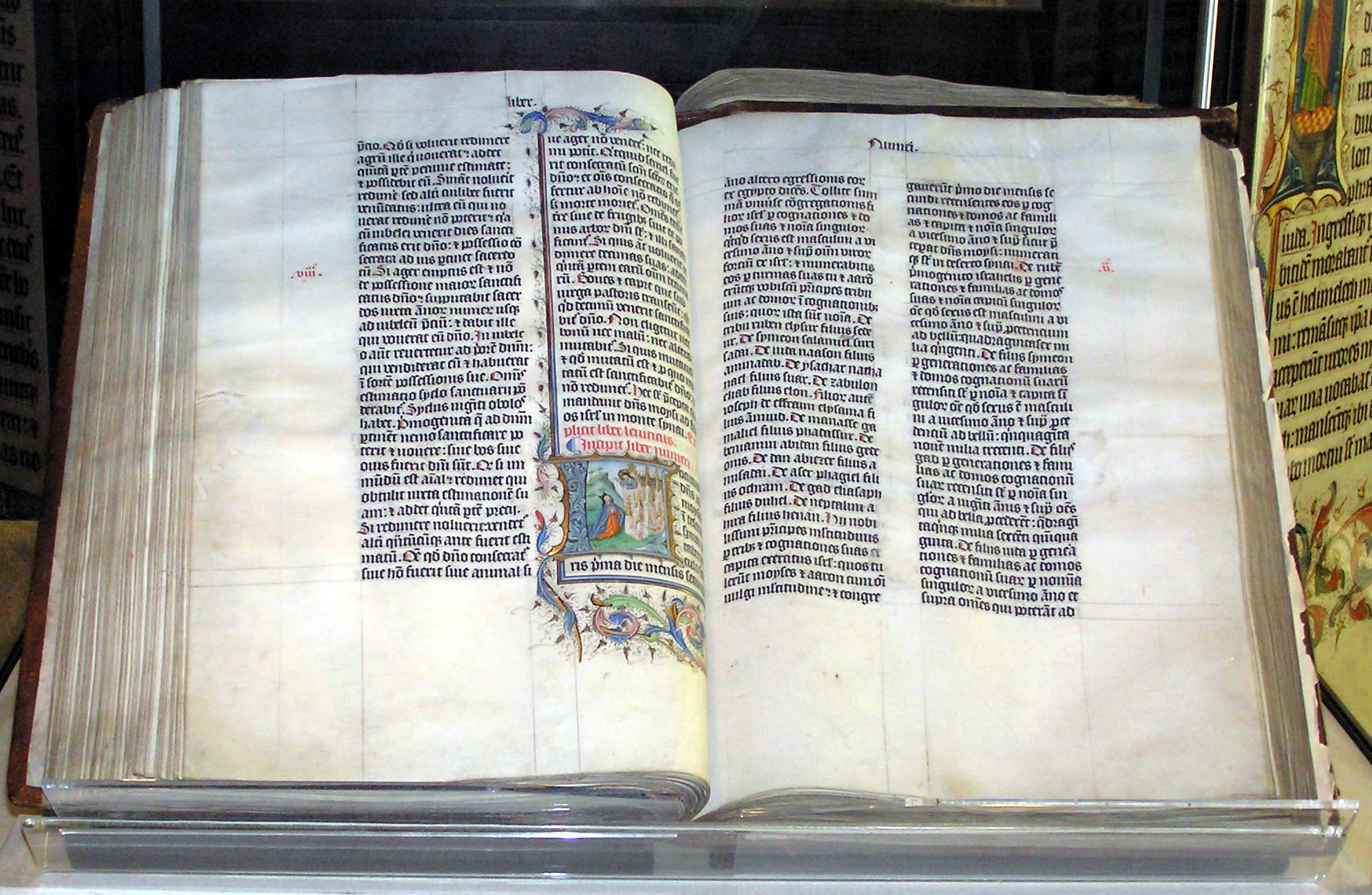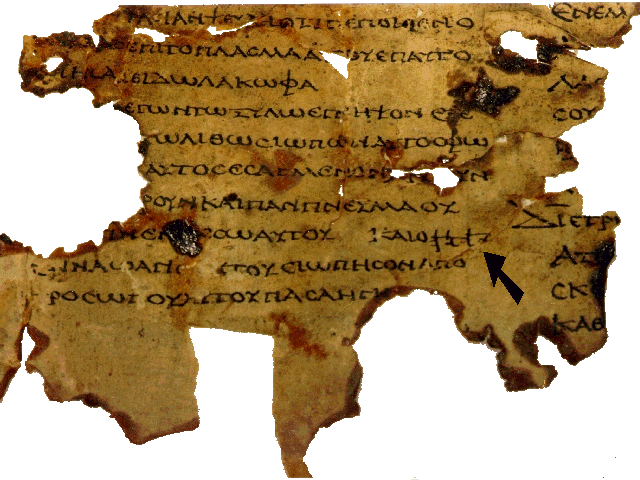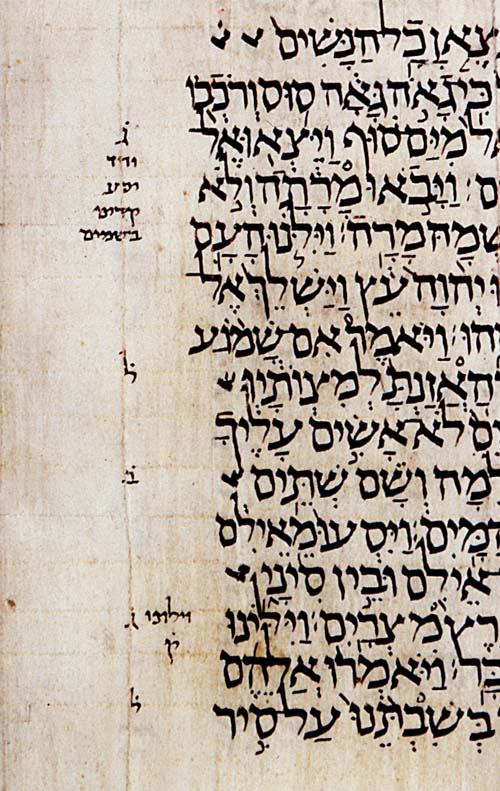|
Lists Of New Testament Manuscripts
The following articles contain lists of New Testament manuscripts: In Coptic * List of Coptic New Testament manuscripts In Greek * List of New Testament papyri * List of New Testament uncials * List of New Testament minuscules ** List of New Testament minuscules (1–1000) ** List of New Testament minuscules (1001–2000) ** List of New Testament minuscules (2001–) * List of New Testament lectionaries In Latin * ''Vetus Latina'' manuscripts § New Testament * Vulgate manuscripts § New Testament In Syriac * List of Syriac New Testament manuscripts See also * Biblical manuscript ** List of Hebrew Bible manuscripts ** Septuagint manuscripts * Bible translations ** Bible translations into Geʽez ** List of Bible translations by language * Categories of New Testament manuscripts * ''Novum Testamentum Graece (''The New Testament in Greek'') is a critical edition of the New Testament in its original Koine Greek, forming the basis of most modern Bible translatio ... [...More Info...] [...Related Items...] OR: [Wikipedia] [Google] [Baidu] |
List Of Coptic New Testament Manuscripts
Coptic-language manuscripts of the New Testament include some of the earliest and most important witnesses for textual criticism of the New Testament. Almost 1000 Coptic manuscripts of the New Testament have survived into the 21st century. The majority of them represent Sahidic and Bohairic dialects; only very few manuscripts represent the dialects of the Middle Egypt. Sahidic manuscripts * The ''Crosby-Schøyen Codex'', Book of Jonah and 1 Peter; the 3rd or 4th centuries; University of Mississippi * British Library MS. Oriental 7594, Deuteronomy, Jonah, and Acts; the 3rd/4th century * Michigan MS. Inv 3992, 1 Corinthians, Titus, and the Book of Psalms; 4th century * Berlin MS. Or. 408, Book of Revelation, 1 John, and Philemon; 4th century * British Library MS. Oriental 3518 4th century * Papyrus Bodmer III * Papyrus Bodmer XIX — Matthew 14:28-28:20; Romans 1:1-2:3; 4th or 5th century. * Codex Copticus Tischendorfianus I – fragments of the four Gospels; 9th or 10th cent ... [...More Info...] [...Related Items...] OR: [Wikipedia] [Google] [Baidu] |
List Of Syriac New Testament Manuscripts
Syriac-language manuscripts of the New Testament include some of the earliest and most important witnesses for textual criticism of the New Testament. Over 350 Syriac manuscripts of the New Testament have survived into the 21st century. The majority of them represent the Peshitta version. Only a very few manuscripts represent Old Syriac versions. Some manuscripts represent a mixed or eclectic text. Manuscripts housed at the British Library, Additional Manuscripts Manuscripts housed in the Bodleian Library * Dawkins 27, * Huntington MS 133 — Bodleian Library [Baidu] |
Categories Of New Testament Manuscripts
New Testament manuscripts in Greek are categorized into five groups, according to a scheme introduced in 1981 by Kurt and Barbara Aland in ''The Text of the New Testament''. The categories are based on how each manuscript relates to the various text-types. Generally speaking, earlier Alexandrian manuscripts are category I, while later Byzantine manuscripts are category V. Aland's method involved considering 1000 passages where the Byzantine text differs from non-Byzantine text. The Alands did not select their 1000 readings from all of the NT books; for example, none were drawn from Matthew and Luke. Description of categories The Alands' categories do not simply correspond to the text-types; all they do is demonstrate the 'Byzantine-ness' of a particular text; that is, how much it is similar to the Byzantine text-type, from least (Category I) to most similar (Category V). Category V can be equated with the Byzantine text-type, but the other categories are not necessarily re ... [...More Info...] [...Related Items...] OR: [Wikipedia] [Google] [Baidu] |
List Of Bible Translations By Language
The United Bible Societies reported that the Bible, in whole or part, has been translated in more than 3,324 languages (including an increasing number of sign languages), including complete Old or New Testaments in 2,189 languages, and the complete text of the Bible (Protestant canon) in 804 languages. According to Wycliffe Bible Translators, in October 2017, 3,312 languages had access to at least a book of the Bible, including 1,121 languages with a book or more, 1,521 language groups with access to the New Testament in their native language and 670 the full Bible. It is estimated by Wycliffe Bible Translators that translation may be required in 1,636 languages where no work is currently known to be in progress. They also estimate that there are currently around 2,584 languages which have active Bible translation projects (with or without some portion already published). [...More Info...] [...Related Items...] OR: [Wikipedia] [Google] [Baidu] |
Bible Translations Into Geʽez
Bible translations into Geʽez, an ancient South Semitic language of the Ethiopian language area, Ethiopian branch, date back to the 6th century at least, making them one of the world's oldest Bible translations. The oldest translation of part of the Bible into Geʽez are the Garima Gospels. History of the text Translations of the Bible in Ge'ez, in a predecessor of the Geʽez script, Ge'ez script which did not possess vowels, were created between the 5th and 7th century, soon after the Christianity in Ethiopia#Christian Roots, Christianization of Ethiopia in the 4th century. The milestones of the modern editions were the Roman edition of the New Testament in 1548 edited by Tasfa Seyon, which is the ''editio princeps'', and the critical edition of the New Testament by Thomas Pell Platt, Thomas P. Platt in 1830 (his edition of the Geʽez Four gospels, four Gospels was first published in 1826). Translations Garima Gospels The Garima Gospels are the oldest translation of the ... [...More Info...] [...Related Items...] OR: [Wikipedia] [Google] [Baidu] |
Bible Translations
The Bible has been translated into many languages from the biblical languages of Hebrew, Aramaic, and Greek. all of the Bible has been translated into 724 languages, the New Testament has been translated into an additional 1,617 languages, and smaller portions of the Bible have been translated into 1,248 other languages according to Wycliffe Global Alliance. Thus, at least some portions of the Bible have been translated into 3,589 languages. Early translators rendered biblical texts into Syriac, Latin, Geez, Gothic and Slavonic languages, among others. Jerome's 4th-century Latin Vulgate version was dominant in Western Christianity during the Middle Ages. Since then, the Bible has been translated into many more languages. English Bible translations have a rich and varied history of more than a millennium. (See List of English Bible translations.) Textual variants in the New Testament include errors, omissions, additions, changes, and alternate translations. In some cases, d ... [...More Info...] [...Related Items...] OR: [Wikipedia] [Google] [Baidu] |
Septuagint Manuscripts
The Septuagint (LXX), the ancient (first centuries BC) Alexandrian translation of Jewish scriptures into Koine Greek exists in various manuscript versions. List of Septuagint manuscripts There are currently over 2000 classified manuscripts of the Septuagint. The first list of Septuagint manuscripts was presented by Holmes and Parsons. Their edition ends with a full list of manuscripts known to them set out in the Annexes. It enumerates 311 codes (marked with Roman numerals I-XIII and Arab 14-311), of which the codes are designated by their siglum I-XIII, 23, 27, 39, 43, 156, 188, 190, 258, 262. The codes marked with Roman numerals signify given letters from A to Z. The list of Septuagint manuscripts according to the classification of Alfred Rahlfs - a list of all known Septuagint manuscripts proposed by Alfred Rahlfs based on census of Holmes and Parsons. Division in classification by Rahlfs The table of Septuagint manuscripts is divided into ten parts: * Part I: A-Z ... [...More Info...] [...Related Items...] OR: [Wikipedia] [Google] [Baidu] |
List Of Hebrew Bible Manuscripts
A Hebrew Bible manuscript is a handwritten copy of a portion of the text of the Hebrew Bible (Tanakh) made on papyrus, parchment, or paper, and written in the Hebrew language. (Some of the Biblical text and notations may be in Aramaic.) The oldest manuscripts were written in a form of scroll, the medieval manuscripts usually were written in a form of codex. The late manuscripts written after the 9th century use the Masoretic Text. The important manuscripts are associated with Aaron ben Asher (especially Codex Leningradensis). The earliest sources (whether oral or written) of the Hebrew Bible disappeared over time, because of the fragility of media, wars, (especially the destruction of the First and Second Temples), and other intentional destructions. As a result, the lapse of time between the original manuscripts and their surviving copies is much longer than in the case of the New Testament manuscripts. The first list of the Old Testament manuscripts in Hebrew, made by Benjamin ... [...More Info...] [...Related Items...] OR: [Wikipedia] [Google] [Baidu] |
Biblical Manuscript
A biblical manuscript is any handwritten copy of a portion of the text of the Bible. Biblical manuscripts vary in size from tiny scrolls containing individual verses of the Jewish scriptures (see ''Tefillin'') to huge polyglot codices (multi-lingual books) containing both the Hebrew Bible (Tanakh) and the New Testament, as well as extracanonical works. The study of biblical manuscripts is important because handwritten copies of books can contain errors. Textual criticism attempts to reconstruct the original text of books, especially those published prior to the invention of the printing press. Hebrew Bible (or Tanakh) manuscripts The Aleppo Codex (c. 920 CE) and Leningrad Codex (c. 1008 CE) were once the oldest known manuscripts of the Tanakh in Hebrew. In 1947, the finding of the Dead Sea scrolls at Qumran pushed the manuscript history of the Tanakh back a millennium from such codices. Before this discovery, the earliest extant manuscripts of the Old Testament were in Gre ... [...More Info...] [...Related Items...] OR: [Wikipedia] [Google] [Baidu] |
Vulgate Manuscripts
The Vulgate () is a late-4th-century Latin translation of the Bible, largely edited by Jerome, which functioned as the Catholic Church's ''de facto'' standard version during the Middle Ages. The original Vulgate produced by Jerome around 382 has been lost, but texts of the Vulgate have been preserved in numerous manuscripts, albeit with many textual variants. Vulgate manuscripts differ from ''Vetus Latina'' manuscripts, which are handwritten copies of the earliest Latin-language Bible translations known as the "''Vetus Latina''" or "Old Latin", originating from multiple translators before Jerome's late-4th-century Vulgate. ''Vetus Latina'' and Vulgate manuscripts continued to be copied alongside each other until the Late Middle Ages; many copies of (parts of) the Bible have been found using a mixture of ''Vetus Latina'' and Vulgate readings. Manuscripts of the Vulgate, together with the Codex Vaticanus, formed the basis of the printed Sixto-Clementine Vulgate in 1592, which bec ... [...More Info...] [...Related Items...] OR: [Wikipedia] [Google] [Baidu] |
List Of New Testament Papyri
A New Testament papyrus is a copy of a portion of the New Testament made on papyrus. To date, over 140 such papyri are known. In general, they are considered the earliest witnesses to the original text of the New Testament. This elite status among New Testament manuscripts only began in the 20th century. The grouping was first introduced by Caspar René Gregory, who assigned papyri texts the Blackletter character 𝔓 followed by a superscript number. This number refers not to the age of the papyrus, but to the order in which it was registered.Law 2012, p. 95 Before 1900, only 9 papyri manuscripts were known, and only one had been cited in a critical apparatus ( by Constantin von Tischendorf). These 9 papyri were just single fragments, except for , which consisted of a single whole leaf. The discoveries of the twentieth century brought about the earliest known New Testament manuscript fragments. Kenyon in 1912 knew 14 papyri, Aland in his first edition of ''Kurzgefasste...'' in 1 ... [...More Info...] [...Related Items...] OR: [Wikipedia] [Google] [Baidu] |
Vetus Latina Manuscripts
''Vetus Latina'' manuscripts are Biblical manuscript, handwritten copies of the earliest Bible translations into Latin, Latin translations of the Bible (including the Hebrew Bible/Old Testament, the Deuterocanonical books and the New Testament), known as the "''Vetus Latina''" or "Old Latin". They originated prior to Jerome from multiple translators, and differ from Vulgate manuscripts which follow the late-4th-century Latin translation mainly done by Jerome. ''Vetus Latina'' and Vulgate manuscripts continued to be copied alongside each other until the Late Middle Ages; many copies of the Bible or parts of it have been found using a mixture of ''Vetus Latina'' and Vulgate readings. Studies Textual criticism, Textual critics such as the University of Cambridge, Cambridge scholars Alan Brooke (priest), Alan Brooke, Norman McLean and Henry St. John Thackeray, Henry S. J. Thackeray (1906–1935, 8 volumes) have used the blackletter (L (letter), 𝕷) as a sign (known as a '' ... [...More Info...] [...Related Items...] OR: [Wikipedia] [Google] [Baidu] |

%2C_15th_century_(The_S.S._Teacher's_Edition-The_Holy_Bible_-_Plate_XII%2C_1).jpg)



.jpg)


